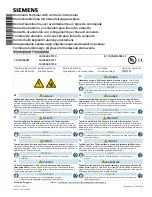
PS-SAU-1900E
Mar. 8
th
,1999 (Rev. 0.0)
--- CONFIDENTIAL AND PROPRIETARY ---
27
•
When Off Hook is detected, and no incoming ALERT message is present, the MSM controller
activates the DTMF detection hardware block. Detection is enabled continuously during the OFF
HOOK state.
•
DTMF tones are detected, then registered as dialed digits. If the first dialed digit is a “#” key, it is
registered for subsequent transmission as part of the dialed digit string. “#” will never act as a
“SEND” function when it is the first dialed digit of a dialing sequence.
•
After each new tone is received, then an optional timer Dial_Time_Out is initiated. If Dial_Time_Out
expires, then all newly received digits are transmitted to the B/S. This automatic send capability can
be disabled.
•
If Dial_Time_Out does not expire, but a “#” key tone is detected at any time after the first digit is
entered, then all gathered digit data is transmitted immediately to the B/S.
•
A System Lost condition occurs. In this case, the LAU applies the appropriate tone to the analog
interface.
•
If no digits are entered, or if entered digits are not transmitted to the B/S within a programmable
timeout period [while Auto Dial is disabled], then the LAU applies the Receiver Off Hook tone to the
analog loop interface.
•
There are two special cases governing how the LAU handles the “#” key, when this key is pressed at
a certain point during the dialing sequence. These cases are when the “#” key is either the third or
the fourth button pressed by the user in the dialing chain. Each case represents a situation in which
a special network function is being accessed by the user. Such functions generally consist of two or
three digits, followed by the “#” tone. With this software switch set TRUE in the LAU software, the
software will accept the “#” button in either the third or fourth digit position, and register it as part of
the dial string. A subsequent occurrence of the “#” button will cause SEND to occur, depending on
configuration of the “# to SEND” function.
•
The “#” send feature can be enabled and disabled using the programming tool.
Received DTMF digits may or may not be considered valid, depending on the current LAU operating
conditions.
3.1.4. TALK
State.
The LAU enters the TALK state via either the Call Placement routine or the Incoming Call routine. While
in this state, the LAU provides the appropriate voice data interface to the J-STD-008 system, and also
monitors for one of several possible interrupting events:
•
Call Waiting event:
If this network feature is enabled, the event occurs when a second call is made
to the LAU, while the LAU is in the Conversation state. An audible tone is sent over the voice path
to the LAU user. This tone informs the LAU user that a second call is available. The LAU user
accepts the second call by “flashing” the LAU’s analog loop interface.
•
Three Way Call event:
If this network feature is enabled, the user is allowed to access multiple far
end parties simultaneously. The event is initiated when the LAU user “flashes” the LAU’s analog
loop interface.
•
DTMF Detected event:
This event occurs if the user sends a DTMF tone to the LAU’s analog loop
interface. If the DTMF tone is of sufficient duration, it will cause detection hardware within the LAU’s
LIU circuitry to send an interrupt to the MSM controller. The controller will decode the incoming digit,
and store it into a software digit count buffer. The recorded digit information will be transmitted to
the B/S if an appropriate command (loop flash) is received by the LAU. The digit buffer is then
cleared.
•
LAU Call Termination event:
An On Hook condition is detected on the analog interface by the
LAU. In this case, the LAU performs necessary house-keeping, then returns to the IDLE state.













































